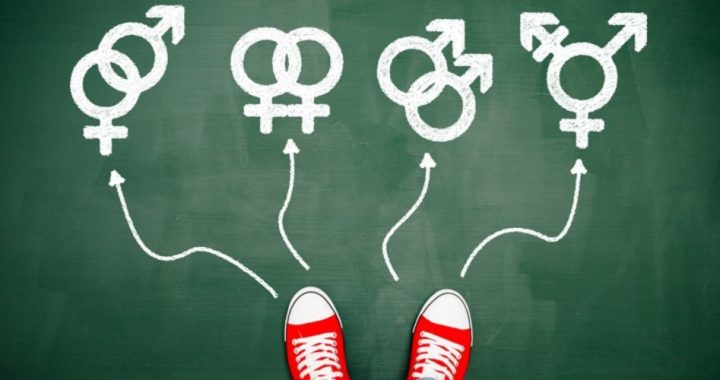
Regulators in Vermont have proposed a rule that would abolish the state’s minimum age requirement for taxpayer-covered “gender-affirmation” surgery. This would mean parents of gender-confused children of any age could potentially take their children for sex-change surgery, which would be paid for by Medicaid.
“Vermont Medicaid beneficiaries who are diagnosed with and receiving treatment for gender dysphoria, who satisfy all conditions set forth in this rule, and for whom the service(s) for which prior authorization is sought is both medically necessary and developmentally appropriate are eligible for coverage of the services governed by this rule,” the proposal says.
The proposed rule eliminates the previous requirement that patients undergoing “gender affirmation surgery” must be at least 21 years old. The proposal would permit patients under the age of 18 to receive the surgery as long as they provide “documented informed consent of a parent(s), legal custodian, or guardian.”
Patients interested in the surgery would need “two written clinical evaluations” and would also be required to complete at least 12 months of “living in a gender role that is congruent with their gender identity, across a range of life experiences and events that may occur throughout the year.”
The proposed rule would allow 16 different types of genital surgery to be paid for by Medicaid, which covers approximately half of all children in Vermont, the Burlington Free Press reports.
The proposal dangerously treats gender-reassignment surgery as a “cure” of sorts for gender dysphoria. But according to former Chief of Psychiatry at Johns Hopkins Hospital and Distinguished Service Professor of Psychiatry at Johns Hopkins University Dr. Paul McHugh and Arizona State University Professor of Statistics and Biostatistics Lawrence Mayer, gender dysphoria is a mental health issue for which hormonal, medical, or surgical interventions serves to intensify, not remedy.
In a 2016 report published in The New Atlantis, McHugh and Mayer are particularly adverse to such medical interventions for youth.
“Children are a special case when addressing transgender issues. Only a minority of children who experience cross-gender identification will continue to do so into adolescence or adulthood,” the report stated.
Similar observations were made by psychiatrist Stephen Stathis, an Australian expert on gender. He noted in 2017 that up to three-fourths of young patients who “present with gender variant interests and behaviors, or are gender diverse” will outgrow the phase.
“You might get a six- or seven-year-old girl wanting to dress as a boy,” he said. “She may even say she wants to be a boy. When she hits puberty, she says, ‘No, I’m just a girl who likes to do boy things.”
Experts have stated many children will be confused about gender at some point in their lives but will outgrow their confusion. Unfortunately, many of those children will be misdiagnosed as transgender and will be administered hormone treatments before they’ve had the opportunity to get through that confusing period.
“There is little scientific evidence for the therapeutic value of interventions that delay puberty or modify the secondary sex characteristics of adolescents, although some children may have improved psychological well-being if they are encouraged and supported in their cross-gender identification,” the New Atlantis study observed. “There is no evidence that all children who express gender-atypical thoughts or behavior should be encouraged to become transgender.”
For this reason, Stathis said he gives few minors a “gender dysphoria” diagnosis at Brisbane’s Lady Cilento Children’s Hospital because the diagnosis is the first step toward transitioning, followed by hormonal therapy and eventually sex reassignment. It seems it is his goal to avoid what Vermont regulators are proposing.
What’s more, Stathis has observed that today’s culture has advanced an agenda in which transgenderism has become trendy and that there is a direct correlation between that cultural change and the number of young people who are claiming to be transgender.
Stathis told the Courier Mail, “One [patient] said to me, ‘Dr. Steve … I want to be transgender, it’s the new black.”
Dr. Ken Zucker, former head of the Gender Identity Service at the Centre for Addiction and Mental Health in Toronto, Canada, has observed the same phenomenon. “The No. 1 factor is the Internet,” he said. “If you’re struggling to find out where you fit, the Internet is filled with things about gender dysphoria.”
“When we ask, ‘When did you first learn about this label of gender dysphoria’, they’ll say, ‘Me and Mom watched Oprah,’” adds Dr. Hayley Wood, a member of Zucker’s team.
Astoundingly, the trendiness of transgenderism has also influenced parents, said Alice Dreger, a bioethicist and professor at Northwestern University’s Feinberg School of Medicine in Chicago. She contends parents who allow their children to change genders “are socially rewarded as wonderful and accepting,” while those who don’t are perceived as “unaccepting, lacking in affection and conservative.”
This is particularly troublesome as a study by the Centre for Addiction and Mental Health in Toronto found that transgenderism was more persistent in children when promoted by adults.
It is also troubling when parents in Vermont are the one of few safeguards protecting their children from undergoing procedures that could have catastrophic physical and mental effects.
“The potential that patients undergoing medical and surgical sex reassignment may want to return to a gender identity consistent with their biological sex suggests that reassignment carries considerable psychological and physical risk,” the New Atlantis study found. The researchers concluded conditioning anyone to accept impersonation of the opposite sex via surgery or chemical influences is harmful, as adults who choose to have sex-reassignment surgeries have “a higher risk of experiencing poor mental health outcomes.” They cite a study that found that “reassigned individuals were about 5 times more likely to attempt suicide and about 19 times more likely to die by suicide.”
In fact, PJ Media did a piece on some of the real-life victims of what it dubbed the transgender “cult.” These “victims” were encouraged to embrace their gender confusion in their youth and are now living with the repercussions of those decisions. “I am a real, live 22-year-old woman, with a scarred chest and a broken voice, and five o’clock shadow because I couldn’t face the idea of growing up to be a woman. That’s my reality,” Cari Stella confessed in a YouTube video. “Gender was done to me, gender was traumatizing to me, I don’t want anything to do with it anymore,” she declared. She admitted, “When I was transitioning, I felt a strong desire — what I would have called a ‘need’ at the time — to transition.”
Stella now contends that her transition only made things worse. “It can be damn hard to figure out that the treatment you’re being told is to help you is actually making your mental health worse. Testosterone made me even more dissociated than I already was,” she said.
Stella is not the exception. A report by the University of Cambridge found that 96 percent of transgender students in Scotland attempted self-harm, and 40 percent attempted suicide. In the United States, that number is the same, according to a 2016 survey from the National Center for Transgender Equality.
According to the Vermont Digger, the public comment period on the proposed rule has passed, leaving the Legislative Committee on Administrative Affairs to hold a hearing and a vote before the final rule goes into effect. It is unclear when that vote will take place.
Image: LemonTreeImages via iStock / Getty Images Plus




